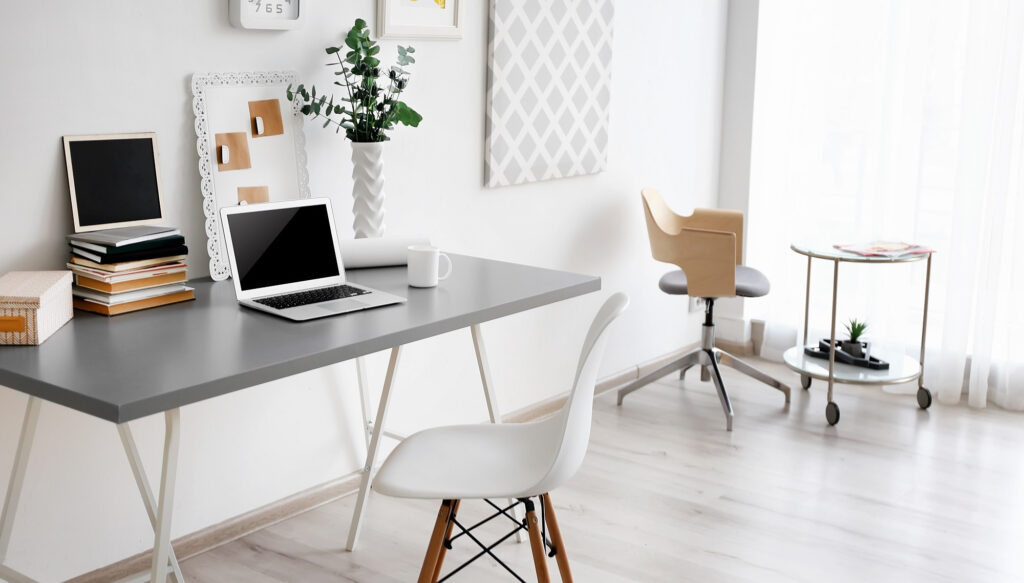As the trend of remote work surges, the necessity of a functional home-office is more pronounced. Having a dedicated work area doesn’t just amplify productivity but also enhances the equilibrium between work and life significantly.
1. Choosing the Characteristic Location
The bedrock of a productive home-office lies in selecting the ideal location. Here are some considerations:
Illumination and Sound: Aim for an area abundant in natural light to minimize eye fatigue. Assess the ambient noise in potential office spaces. Choose areas with negligible noise for sustained concentration.
Discretion: Opt for a work area that confers privacy for uninterrupted tasks and confidential conversations. A room with a door affords the required seclusion for optimum focus.
Nearness to Home Amenities: Whilst it is vital to keep distance from distractions, being too far from essentials like the restroom or kitchen can disrupt your workflow. Hence, strike a balance between accessibility and concentration.
2. Pivotal Home Office Equipment
Your productivity and comfort are greatly influenced by the technology and furniture you equip your home office with:
Ergonomic Furnishings: Make an investment in a supportive chair and a desk that suits your requirements. Ergonomic chairs and adjustable desks can forestall common work from home ailments like backache.
Reliable Technology: A speedy internet is indispensable. Complement it with a working computer and noise-canceling headphones for a competent setup.
Organizing Tools: Employ shelves, desk organizers, and custom cabinetry from Lifestyle WA to maintain a clutter-free workspace.
3. Engineering for Productivity and Coziness
It requires meticulous planning to develop an ambiance that fosters creativity and focus:
Colour and Décor: Opt for serene colours and minimalistic décor to foster a tranquil atmosphere. Personalized touches can spur creativity and give the workspace a unique aura.
Lighting: It’s essential to have appropriate lighting. A combination of natural light, ambient lighting, and task lighting can create a balanced workspace.
Vegetation and Ventilation: Incorporate greenery to enhance air quality and rejuvenate your space. Ensure ample airflow for a comfortable work-day temperature.
4. Innovative Solutions
Integrating state-of-the-art technologies into your home office can streamline your workflow:
Smart Assistants: Gadgets like Amazon Echo or Google Home can simplify tasks, handle your schedules, and enable hands-free communication.
Wireless Solutions: Bluetooth-enabled keyboards and mice, and wireless printers, help reduce cable clutter and create a more organized workspace.
Energy Management: Smart power strips and lights can automatize energy use, saving costs and lessening environmental footprint.
5. Economical Options
Creating a home office on a budget is viable and doesn’t entail quality compromises:
DIY Solutions: Repurpose available furniture or consider cost-effective DIY projects for desks and shelving.
Secondhand Markets: Browse online bazaars or local thrift stores for gently used office supplies at reduced prices.
Minimal Essentials: Prioritize quality over quantity. Invest in multipurpose items and focus on acquiring only what’s necessary to kick-start.
Setting up a home office needn’t be overwhelming. A productive and comfortable workspace, suiting your needs, can be achieved by selecting the appropriate space, investing in essential equipment, and incorporating technology.
